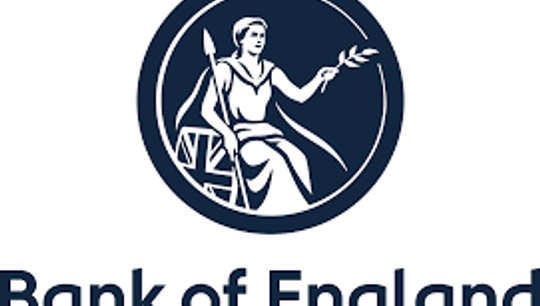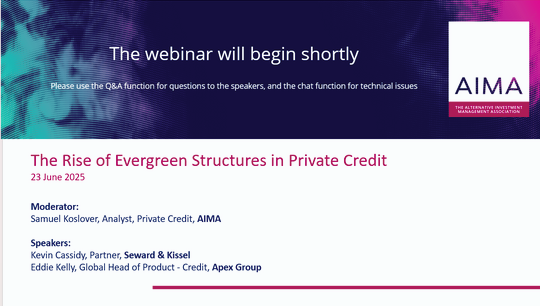The private credit era
By Belle Kaura, Third Eye Capital
Published: 18 November 2024
Current landscape and growth projections
Private credit (PC) is experiencing a pivotal moment, marking its strongest position since the global financial crisis (GFC), now accounting for ½ of global financial assets amid the highest interest rates seen in four decades, bank retrenchment, and greater demand for capital than supply. This environment heightened demand for capital, propelling PC to a forecasted US$2.8tn market by 2028, a leap from the current US$1.5Ttn Now the second largest private market strategy PC overtook venture capital and is second only to private equity (PE). There is a growing paradigm shift away from PE to PC. Investor interest remains robust, 92% plan to increase allocations, supported by a notable 2023 internal rate of return (IRR) of 9.2%, not far behind PE 10.5% IRR. Performance was exceptionally strong for floating-rate products.
Investor sentiment and strategy preferences
Direct lenders contribute more than capital, acting as strategic partners leveraging their operational/re-structuring ex-pertise. Direct lending stands out as the preferred strategy, capturing 70% LP interest and surpassing US$590bn, a steep rise from US$70.8bn a decade ago. Although the direct lending growth rate has begun to taper going from half of fundraising in 2021 to just 31.8% 2023, it still constituted 88% of the US$50.4bn raised Q2-2023. Mezzanine and infrastructure gained traction and special credit situations saw elevated fundraising. Pure distress strategies are tailing off as workouts pre-empt opportunities. In emerging strategies, 58% of LPs prefer asset-backed lending; 37% sec-ondaries.
PC earned a place in institutional portfolios with almost one-third invested, two-thirds having 5%+ allocations targeting 8-14%. Global flows exceeded US$200bn for the fourth consecutive year. Better downside protection, higher returns and lower credit losses than fixed income is driving pensions and insurers into the asset class. Performance met or exceeded expectations of 89% of investors. Performance is expected to remain strong over the next year by 63% while 30% expect even better performance.
Canada’s largest pensions, managing US$1.3tn, have a strong foothold in PC globally with plans to increase exposures. Notable allocations range from a 25% year-over-year increase to plans to double allocations over five years, with some ramping up internal asset-based lending teams. However, Canadian institutions remain relatively under-invested creating opportunities for PC expansion.
Untapped opportunities in the retail segment will accelerate growth. Retail investors must have access to PC, especially in Canada where a significant proportion of the population lacks pension coverage. In the new normal, balanced portfolios warrant allocations of 5-20%. PC is often associated with higher inherent risk even though it spans the capital structure and has varying risk profiles. To de-bunk this myth and expand democratisation through broader distribution, dealers must embrace robust risk assessment for a clear picture of investment processes, liquidity terms, and effects of stressed conditions.
Market dynamics
Post-GFC there was an evolutionary shift to private lenders who stepped in to fill the widening void left by banks. In Canada, banks still dominate the lending landscape with ~80% market share. Less than 3% of loans are made by alternative lenders and US managers only invest 2-3% of their deals in Canada. Change may be on the horizon, Q4-2023 only 60% of US$1.43tn issued came from banks.
Canadian banks extended amortisation/covenants for businesses tackling a challenging inflationary environment but are now adopting a more cautious approach by increasing loan loss provisions and maintaining large capital buffers, resulting in loan growth rate slowdown of 4%. Q1-2024 loan losses were 20% higher than pre-pandemic, but credit loss provisions are expected to peak this year. This conservatism is a hallmark of stability of the Canadian economy, but contagion of investor fear related to global bank sector stress and wholesale market disruptions could have an impact.
Credit and insolvency trends
Banks are retrenching in the face of greater regulatory scrutiny, cost structures, and liquidity constraints. Business lending indicators show significant tightening close to peak pandemic levels. Financial authorities are universally enhancing supervision of risk exposures and increasing capital requirements when capital is already at a premium. US Banks need to free up regulatory capital to comply with tougher rules in the wake of regional bank crises and Basel III, while Canadian banks ready themselves for the first major reforms in recent times raising stability buffers.
Bank contraction due to financial conditions reminiscent of recessions and reluctance to lend to non-PE sponsored complex businesses is resulting in a corollary increase in non-bank credit. While banks face regulatory and operation-al constraints, PC is a testament to the innovative spirit of alternative lending supporting businesses to survive and thrive. PC fosters a dynamic financing ecosystem by diversifying borrower options and reducing systemic risk of over-reliance on banks, thereby offering resiliency through banking crises/regulatory shifts.
Capital supply growth is contracting as macro weakness put pressure on the credit environment and floating-rate loans added ~500 bps of interest expense (20% earnings before interest, taxes, depreciation, and amortisation (EBITDA) degradation). Inflation and more expensive debt coupled with enduring pandemic issues squeezed margins. Corporate distress is on the rise as companies became highly levered post-2009. Stress impacts of higher rates, slower economic activity, and catch-up effect of phasing out government intervention elevated insolvency rates. US Chapter.11 filings are 39% higher than 2023 and 46% higher than the past decade. Canadian insolvencies surged at record rates not seen in over two decades, increasing sharply since mid-2023 to double the pre-pandemic average. Insolvencies were expected to rebound to pre-pandemic levels but surpassed those levels by a large margin. Insolvencies are heavily concentrated among small businesses, and while broad-based across industries, sectors more vulnerable to economic disruptions (retail, hospitality, energy) were harder hit.
Correlation anomalies
Default rates, a leading indicator of recessions, tend to mirror insolvency trends. Based on characteristics informing credit cycles the market is in the ‘average’ stage whereas insolvency data and interest rates point to a ‘stressed’ phase. Surprisingly, default rates are unusually low, below the 10-year average, despite skyrocketing debt-servicing costs and insolvencies figures, due to forbearance and exacerbated by a rise in debt restructurings preventing default and extending maturities. This anomaly stems from delayed impact of broader economic conditions as effects of rising rates/downturns lag initial triggers. Full impacts could manifest in coming quarters.
Economic uncertainty persists but the higher-for-longer thesis is fading along with default risk. The question is whether rate reductions can stabilise and eventually improve deteriorating credit conditions – keeping defaults low. The massive, delayed default cycle predicted post-pandemic has not materialised, large scale defaults were staved off as the peak of stress has been hit. PC proved its resilience, strong underwriting capabilities, and benefits of cooperation with borrowers which is evidenced by low defaults and good performance.
High credit spreads and distress debt ratios are approaching pre-2008 levels. Indicators of financial stress were below historical averages through the pandemic but have been normalising. There is a mismatch in supply and demand and capital raised for direct lending. Earlier this year when corporate defaults were rising there was still very little pricing at distressed levels. Distress scenarios today look very different than pre-2020, even when S&P distress definitions are met businesses can be operationally sound and have sufficient liquidity, but refinancing could be challenging. Secondary markets which typically inform distress debt ratios can no longer be relied upon. Traditional metrics no longer make sense in today’s fast-evolving landscape.
Unprecedented levels of liquidity support and central bank intervention created cheap liquidity for fundamentally sound businesses causing overleveraged balance sheets, delaying impacts of underlying financial pressures. Correlation between defaults and the distress debt ratio broke down because of the infusion of trillions of dollars of surplus capital since the pandemic. This marked disconnect is forcing nuanced examination of key fundamental metrics (maturities, leverage, cashflow) for a true picture of a borrowers’ ability to navigate credit markets and survive margin pressures. Restructurings, amends, and extends can be a red flag.
Financial system resilience
Despite inflationary pressures, record high rates, and geopolitical concerns, US GDP grew at a steady pace of 1.4% and Canada’s financial system proved its resilience. Middle market companies are experiencing positive year-over-year growth in sales and profits. While inflation impacted bottom-line profitability, small and medium enterprises (SMEs), especially in essential/resilient sectors, maintained stable cash flows and met debt obligations. Businesses remained financially healthy due to diversified and long-term financing, reduction of credit demands, and higher levels of illiquid assets built up during the pandemic. Debt-to-asset ratios rose due to lower asset valuations but remain below pre-pandemic levels. While liquidity positions deteriorated, levels are still strong by historical standards. Interest costs as a share of earnings remain below pre-pandemic levels but will keep rising if existing debt is refinanced at higher interest rates. Liquidity management came into sharp focus as businesses adapted to challenges.
Anticipation of declining policy rates is driving renewed appetite for risk, raising asset prices and driving down risk premium and credit spreads. The end of tightening is coming but will be unlikely this year as recent data signals economic slowdown and risk of liquidity pressures in the financial system. Uncertainty remains given that inflationary pressures and geopolitical concerns could persist. Recent forecasts of US recession increased by 10%, but with declining inflation risks of a major recession lessened. Debt serviceability and asset valuations are key risks to financial stability. Valuations of some financial assets are stretched, increasing risks of a sharp correction generating system-wide stress. Recent rises in leverage in the non-bank financial intermediation sector could amplify the effects of such a correction. The interconnectedness of the financial system could result in stress in one sector having a contagion effect.
Outlook
The outlook for PC is promising. Persistent inflationary pressures driving a high-rate environment, tightening bank conditions, liquidity constraints in the syndicated market, and evolving lending trends have had a favourable impact. Higher rates raised borrowing costs, removing excess liquidity across the economy. These dynamics allowed lenders to command enhanced deal terms, including lower leverage ratios, and better debt-coverage metrics. Direct senior credit maintained solid covenants with at least two financial. While rate cuts will affect floating-rate loan yields, PC will gain ground and perform as banks retreat.
Market uncertainty and tighter capital conditions drove M&A slowdown (-35%) to pre-pandemic levels impacting exits/turnarounds and causing pent-up demand for deals. A rebound is imminent as economic uncertainty lessens and rate cuts materialise. PC sponsors are ramping up asset-backed financing, a US$5-20tn market historically dominated by banks. Hybrid/ junior capital will be in play as fundamentally sound businesses facing higher debt-service levels maximised senior debt. Opportunities abound to finance high quality growth companies as PE investors cycle away from growth to stable/profitable companies. In the lucrative world of private markets, direct lending has potential for dramatic expansion into the PE footprint as bank lending declines and regulatory constraints rise.
The next growth phase will capitalise on macro themes of de-globalisation, data/security, distress, digitisation, and de-carbonisation and specialised industry-specific, thematic, or situational credit solution funds. The burgeoning PC sector will need to get in front of heightened policymaker/financial stability body scrutiny.
Q1-2024 loan losses were 20% higher than pre-pandemic, but credit loss provisions are expected to peak this year. This conservatism is a hallmark of stability of the Canadian economy, but contagion of investor fear related to global bank sector stress and wholesale market disruptions could have an impact.











